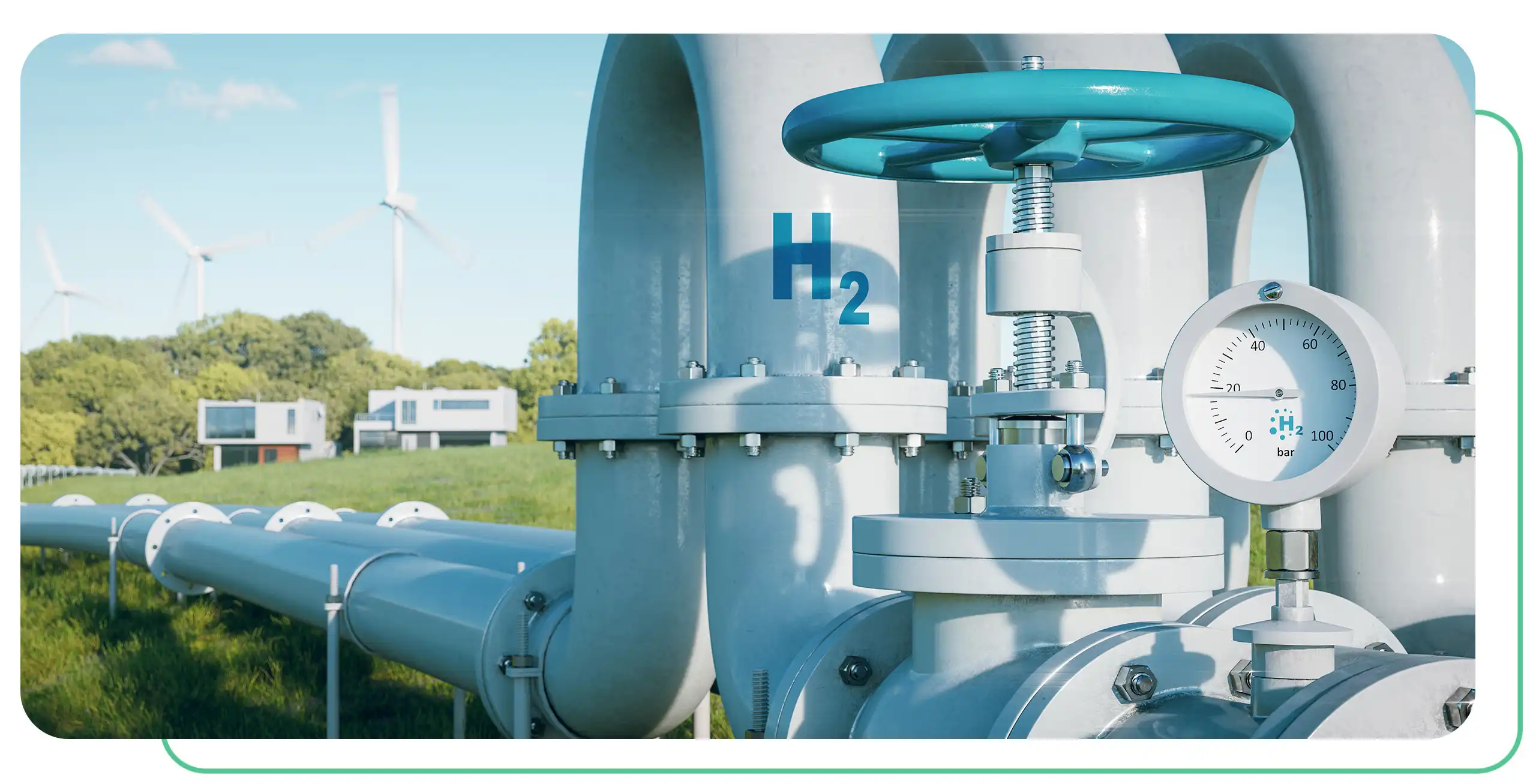Regenerative hydrogen
What is this energy source of the future?Hydrogen is seen as one of the most promising energy carriers for the future. It offers enormous potential to advance the energy transition and reduce global emissions of greenhouse gases. Green hydrogen, also known as regenerative hydrogen, plays a particularly important role here. The importance of hydrogen as an energy carrier and the production of green hydrogen by electrolysis with renewable energies is examined in more detail below.

The importance of hydrogen as an energy carrier
Why is it so important?Hydrogen is a versatile energy carrier that can be used in various areas. It can be used for power generation, as a fuel for vehicles and as a raw material in industrial processes are used. Hydrogen is energy rich and can be stored and transported efficiently, giving it a clear advantage over other renewable energies such as wind and solar power. In addition, when used as an energy carrier, hydrogen only emits water, which means it can potentially contribute to the decarbonization of various sectors.
How is green hydrogen produced?
Electrolysis with renewable energyGreen hydrogen is obtained through the electrolysis of water. Water is split into its components hydrogen (H2) and oxygen (O2). This process takes place in an electrolytic cell that is supplied with electricity. However, the crucial aspect is that this electricity must come from renewable energy sources to ensure the green character of the hydrogen. Electricity from wind farms, solar systems or hydroelectric power stations is used to produce hydrogen without CO2 -Emissions.
Renewable electrolysis enables the conversion of excess renewable energy into hydrogen that can be stored and used as an energy source when needed. Green hydrogen can thus serve as an energy store and offer a flexible and sustainable solution to the challenges of the energy transition.

Advantages and potential of green hydrogen
Green hydrogen and its contribution to decarbonizationGreen hydrogen has become increasingly important in recent years. It is seen as a promising solution to drive the transition to a sustainable energy future. The advantages and potential of green hydrogen are diverse and include areas such as decarbonization, flexibility of energy supply, possible uses in different sectors and the promotion of the energy transition with the creation of new jobs.
Compared to conventional hydrogen, which is obtained from fossil fuels, the production of green hydrogen does not produce any CO2 emissions. By substituting fossil fuels in various sectors such as transport and industry, green hydrogen can make a significant contribution to reducing greenhouse gas emissions and thus combating climate change.
Another advantage lies in the flexibility and storage of renewable energy that green hydrogen offers. Renewable energies such as wind and solar energy are subject to natural fluctuations in their availability. By converting excess energy into green hydrogen, these fluctuations can be balanced and the energy stored efficiently. Hydrogen can be converted back into electricity when needed, serving as a flexible energy source. This enables better integration of renewable energies into the energy system and increases security of supply.




